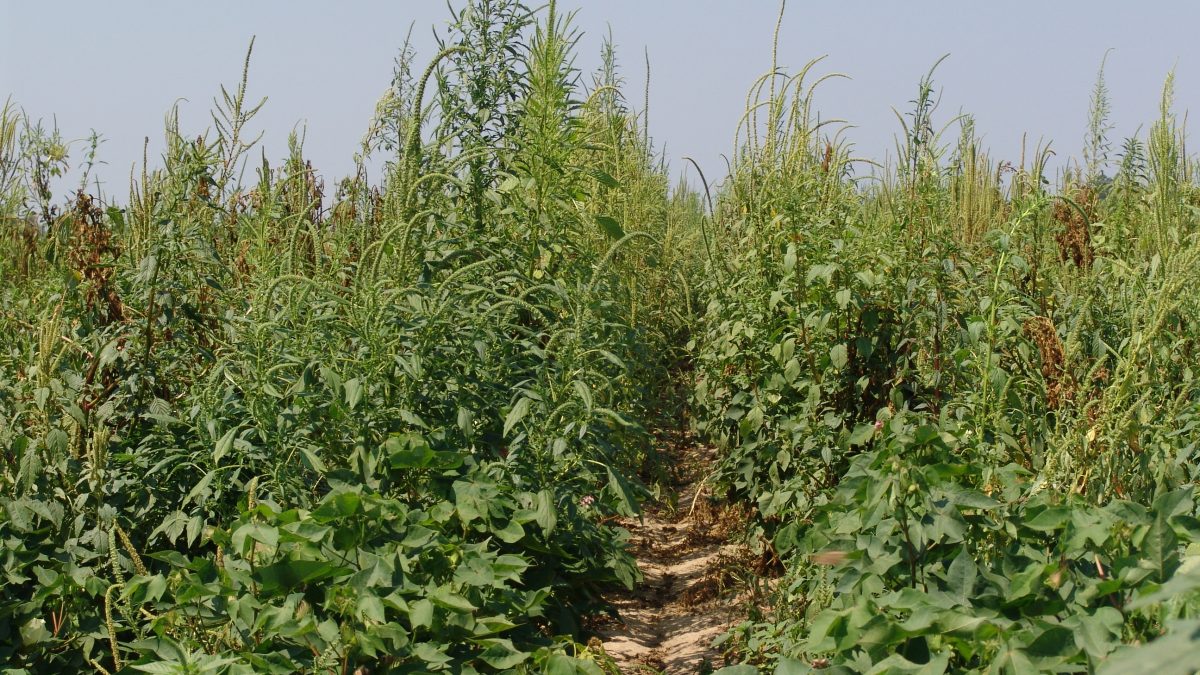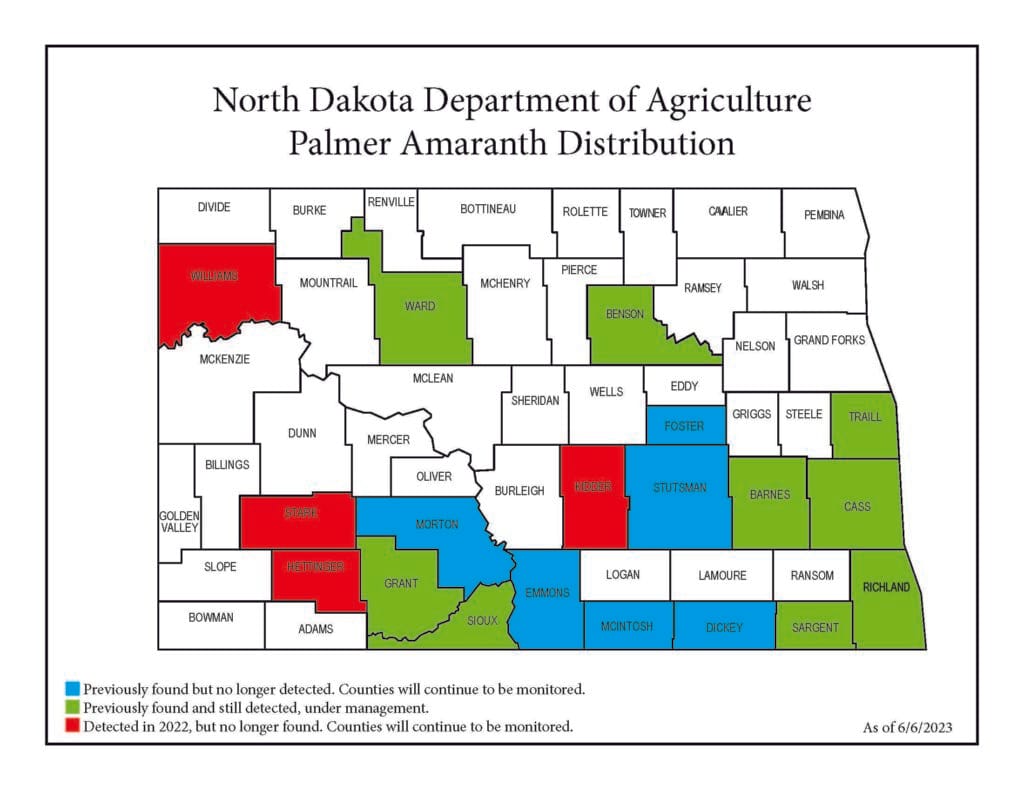Keeping Vigilant: Palmer Amaranth Update

2023 turned out to be a quiet year in the battle against Palmer amaranth, and while I’m not complaining about the lack of news, we don’t want to dismiss this super weed.
The latest Palmer amaranth distribution map for North Dakota, updated in June of 2023, shows that the fight is ongoing in several counties, but that populations appear to have been eradicated in other areas!

Per Joe Ikley, NDSU Extension Weed Specialist, counties in red and blue are considered to be “success stories,” where small populations of Palmer amaranth were detected, confirmed and hand-pulled. The counties in green “have typically been larger infestations that are more difficult to eradicate.” Part of this difficulty is the aggressive nature of the weed, as well as that populations found in ND have shown resistance to at least FIVE herbicide sites of action. This is one of the reasons the agriculture community is working so hard to prevent establishment.
These success stories are, in large part, due to continued focus on early detection of small infestations. Picking up on small populations gives us the chance to get them under control before they get out of hand.
But we aren’t out of the woods yet! We still have active populations to manage, so don’t forget to consider the big three methods of introduction: manure/screenings, equipment, and contaminated seed.
If you suspect you might have Palmer amaranth on your land, contact your local extension agent and follow these steps:
- Mark/flag the location for future monitoring.
- Take photos. Quality matters. Separate, up-close pictures of leaves, stems, and flowers aid identification.
- Mix your chemistries. Multiple modes of action, strong residuals, and a strong premix are good tools in your spray tank.
- Narrow up your crop rows. Palmer amaranth is opportunistic and will take advantage of any gaps in the canopy.
- Do not rely on herbicide control alone. Scout for escapes, and don’t be afraid to get out and hand-pull any weeds.
- PULL, BAG, BURN, and BURY. Bag the plant to prevent accidental seed spread. Burn to destroy as many seeds as possible. Bury remnants to keep surviving seed from germinating.
- Monitor the area for the next few years. Seeds can survive for years and can germinate throughout the growing season.
- DO NOT harvest Palmer amaranth patches discovered in the fall. Don’t forget, Palmer can easily spread through equipment. Hand pull, bag, burn, and bury.
Need help with identification? Check out NDSU’s page on Palmer Amaranth, and if in doubt, call an extension agent or reach out to our agronomy team.
For more resources, check out these links:



